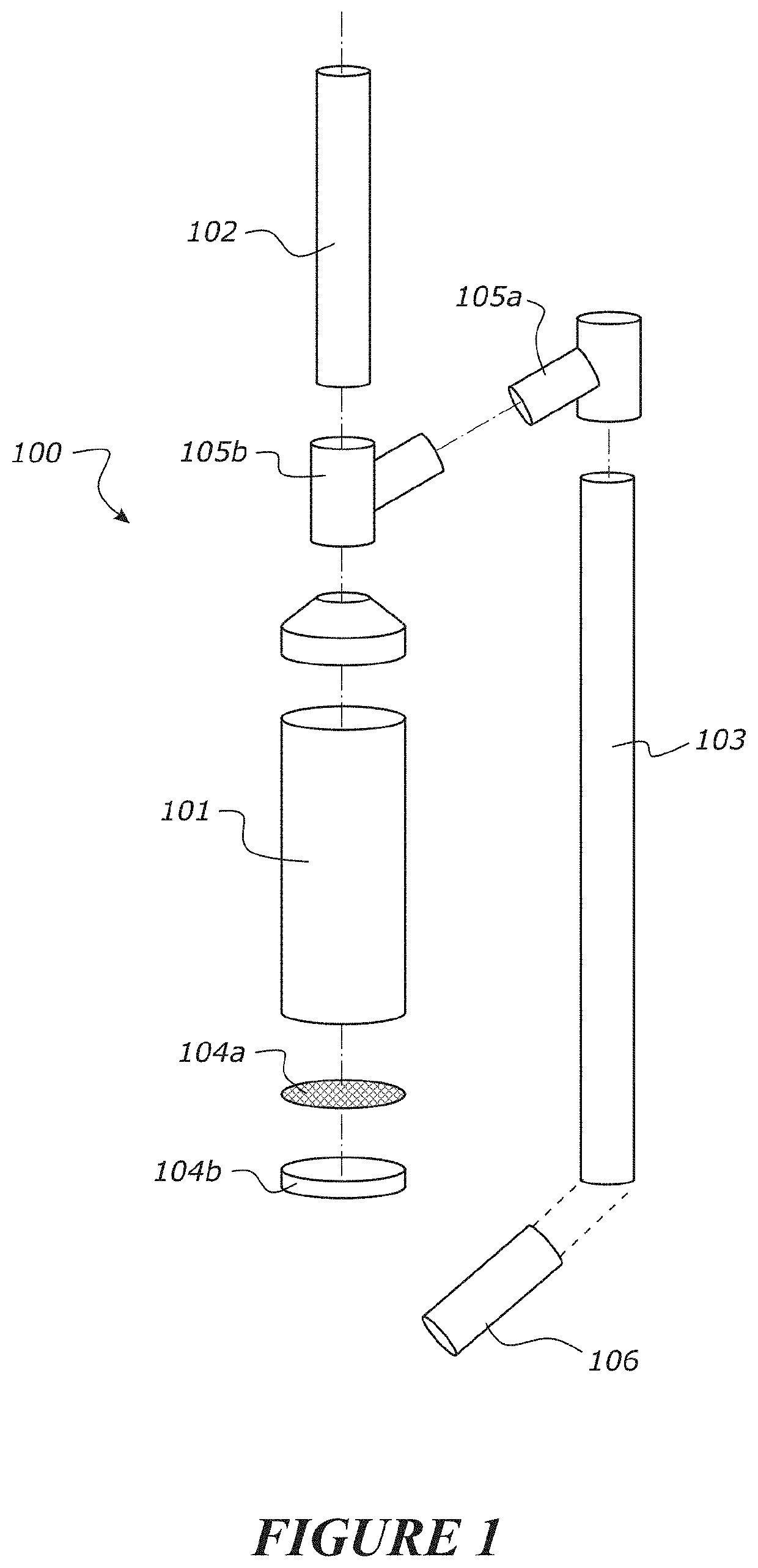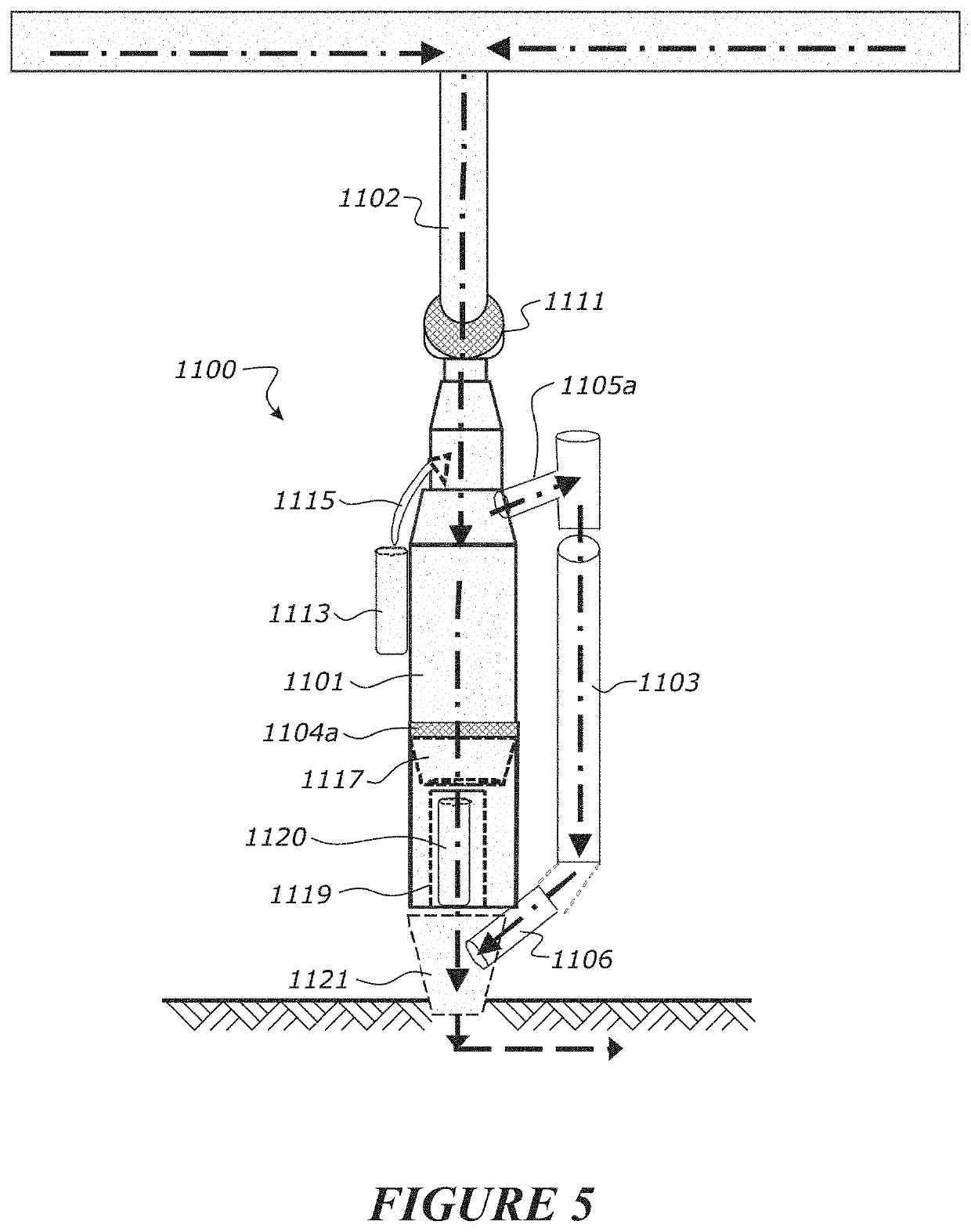A device for treating roof runoff
- Summary
- Abstract
- Description
- Claims
- Application Information
AI Technical Summary
Benefits of technology
Problems solved by technology
Method used
Image
Examples
examples
[0089]The following non-limiting examples are provided to illustrate the present invention and in no way limit the scope thereof.
experiment 1
ment
[0090]The main purpose of the batch experiment was to evaluate the capability of the treatment materials in reducing the percentage of dissolved Zn and Cu from roof-runoff at the selected grade of ≥1.18≤2.36 mm and to identify whether retention time influenced the percentage reduction of dissolved Zn and Cu.
Preparation of Treatment Materials
[0091]The limestone and mussel shells used in this research were purchased from Pearson's LTD Landscape Supplies at $8 per 30 kg bag each. Material that were wet upon purchase were left to air dry prior to crushing. Limestone and mussel shells were crushed using a mechanical crusher. The crushed particles were sorted using selective sieve sizes to obtain a particle size between ≥1.18≤2.36 mm.
Site Selection and Roof Runoff Collection
[0092]A zinc roof and a copper roof were used to collect roof-runoff used for both the batch and laboratory column experiments, as well as the field trials.
[0093]Roof-runoff for the laboratory experiments was colle...
experiment method
[0094]The materials were evaluated using roof-runoff from two rainfall events. The experiments were repeated twice with roof-runoff from the first rainfall event and three times for the second rainfall event. About 5 L of roof-runoff was collected from both the Zn and Cu roofs and stirred constantly in separate 5 L beakers. This was done to prevent the particles in the roof-runoff from settling and to promote homogeneity of the samples being tested.
[0095]From the bulk samples, 50 mL of each treatment material was measured, weighed and washed with deionized water to remove the fine particles and were then poured into separate 150 mL beakers. The sequence of the retention time for each repetition of the experiment was done randomly to eliminate bias using randomize.org-listrandomizer. A timer was set to the first water retention time obtained from the randomisation list and 50 mL of roof-runoff was poured into each beaker containing 50 mL of treatment material (1:1 ratio) and stirred ...
PUM
| Property | Measurement | Unit |
|---|---|---|
| Fraction | aaaaa | aaaaa |
| Hydraulic conductivity | aaaaa | aaaaa |
| Hydraulic conductivity | aaaaa | aaaaa |
Abstract
Description
Claims
Application Information
 Login to View More
Login to View More - R&D
- Intellectual Property
- Life Sciences
- Materials
- Tech Scout
- Unparalleled Data Quality
- Higher Quality Content
- 60% Fewer Hallucinations
Browse by: Latest US Patents, China's latest patents, Technical Efficacy Thesaurus, Application Domain, Technology Topic, Popular Technical Reports.
© 2025 PatSnap. All rights reserved.Legal|Privacy policy|Modern Slavery Act Transparency Statement|Sitemap|About US| Contact US: help@patsnap.com



